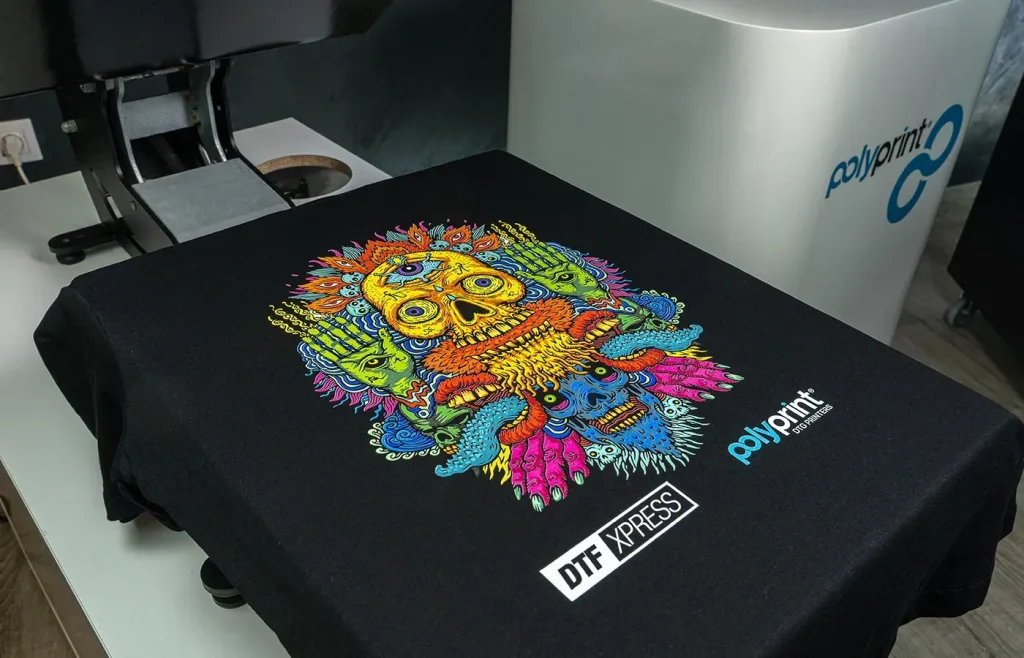In the dynamic world of garment decoration, **DTF printing**, or Direct-to-Film printing, has quickly become a popular choice for both professionals and enthusiasts. This innovative process involves transferring vibrant designs from a specialized film onto various fabrics, making it a versatile solution for many applications. As we delve into **how DTF printing works**, you’ll discover the technology’s seamless blend of quality and efficiency. The **benefits of DTF printing** are vast, from producing high-resolution images to offering quick turnaround times, making it an invaluable tool in the fast-paced fashion industry. With the latest DTF printer technology continually evolving, there’s never been a better time to explore the myriad of **DTF printing applications** available today.
Also known as Direct-to-Film technology, this modern printing method has revolutionized how designs are transferred onto fabric. In a world where customization is key, approaches like this allow for intricate detailing and vibrant color reproduction that meet the demands of contemporary garment printing. By employing a heat transfer technique coupled with high-quality inks, alternative terms like DTF transfer can also encapsulate the essence of this adaptable printing solution. As industries embrace advancements, understanding these methodologies and their many advantages could significantly influence the future of apparel decoration. Whether for commercial purposes or personal projects, exploring these innovative printing solutions will illuminate the path to creativity in fabric design.
Understanding DTF Printing Technology
Direct-to-Film (DTF) printing is an innovative printing technique that balances speed and quality, making it a popular choice for many businesses. The process involves printing designs onto a special film that is designed to withstand a heat transfer process, ensuring vibrant and long-lasting prints on fabrics. Unlike traditional methods, the DTF process incorporates eco-friendly inks that are safe and effective, providing a sustainable approach to garment decoration.
Moreover, this technology provides immense versatility as it can be applied to a variety of fabrics including cotton, polyester, and blends. This adaptability allows designers and businesses to explore an array of creative applications, from fashion apparel to branded merchandise. With continuous advancements in DTF technology, the printing quality and efficiency keep improving, making it an attractive choice for those in the textile industry.
Frequently Asked Questions
What is DTF printing and how does it work?
DTF printing, or Direct-to-Film printing, is an advanced technique that involves printing designs on a special film using eco-solvent or water-based inks. This process includes applying an adhesive powder to the wet ink, curing it with heat, and finally, transferring the design onto the garment with a heat press, resulting in vibrant, long-lasting prints.
What are the benefits of DTF printing compared to traditional methods?
The benefits of DTF printing include high-quality, vibrant prints on various fabrics, cost-effectiveness through optimized designs using gang sheets, and quick turnaround times which cater to urgent orders. This versatility makes it a superior choice over traditional screen printing methods.
What is the latest DTF printer technology available?
The latest in DTF printer technology is the Epson SureColor G6070, launched on April 16, 2025. This printer is designed for reliability and functionality, targeting garment decorators with features that enhance print quality and efficiency.
What applications can benefit from DTF printing?
DTF printing is versatile and can be applied in various fields including clothing and apparel production, promotional items, and even home decor. It’s ideal for creating intricate designs for fashion, custom-branded merchandise, and personalized textile home items.
How does DTF printing compare to DTG printing?
While both DTF (Direct-to-Film) and DTG (Direct-to-Garment) printing aim to achieve high-quality prints, DTF printing offers better versatility, allowing for application on a wider range of fabrics and higher print durability. Additionally, DTF is often more cost-effective for smaller batch runs.
What recent developments in DTF printing technology should I know about?
Recent developments in DTF printing include major expansions by companies like EazyDTF, which added ten large-format DTF printers for nationwide same-day shipping, and the launch of web-to-print platforms like Snuggle DTF, enhancing accessibility for commercial printing and resellers.
| Key Points | Details |
|---|---|
| Definition of DTF Printing | A method of transferring vivid designs directly onto fabrics using a film and heat transfer process. |
| Benefits | 1. High Quality and Versatility: Produces sharp, full-color designs on various materials. 2. Cost-Effective: Minimizes costs through efficient gang sheets. 3. Quick Turnaround: Enables fast processing of designs ideal for urgent orders. |
| Key Developments | 1. Epson’s SureColor G6070 DTF printer release. 2. EazyDTF expands capacity with additional printers for same-day shipping. 3. Snuggle DTF launches a web-to-print platform to enhance accessibility. |
| How DTF Works | 1. Printing: Direct printing of designs onto DTF film. 2. Adhesion: Application of adhesive powder on wet ink. 3. Curing: Heat curing of film for bonding. 4. Transfer: Heat-pressing the film onto garments. |
| Applications of DTF Printing | Used in clothing, promotional items, and home decor, showcasing its versatility across industries. |
Summary
Direct-to-Film (DTF) printing is revolutionizing the printing industry with its ability to deliver high-quality, vibrant designs directly onto fabrics. This technology not only enhances the visual appeal of garments but also provides a cost-effective solution for businesses by maximizing material usage and reducing processing time. Recent advancements, such as new printer launches and increased service capabilities, further underscore DTF printing’s potential to meet growing market demands. By embracing DTF printing, businesses can explore newfound efficiencies and creativity in garment decoration, ultimately transforming their production processes and product offerings.



